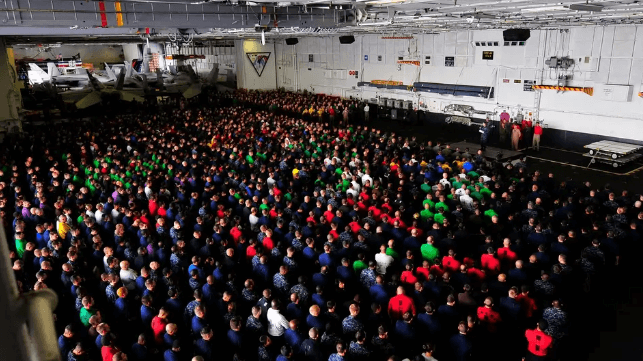U.S. Navy Suspends "Up-or-Out" Policy in a Bid to Boost Retention

The U.S. Navy is temporarily doing away with its longstanding "up-or-out" policy for enlisted sailors in an attempt to boost retention.
Enlisteds in all branches of the armed forces have to keep moving up the promotion ladder fast enough to keep up with high-year tenure (HYT) limits, time-limited gates which set a cap on how long a servicemember can remain at any given rank. If servicemembers stay put too long without a raise in grade, they are forced to either separate or retire. The Navy has suspended its version of this system through 2025.
“This suspension means more of our talented and experienced sailors can stay in the Navy,” said Rear Adm. James Waters III, the Navy's HR chief. “By removing this barrier to retaining career-minded sailors, the Navy is broadening career progression opportunities for sailors and allowing them the opportunity to advance to the next higher paygrade.”
The announcement means that commands cannot force an active-duty sailor to separate or to transfer to Fleet Reserve when the servicemember hits the HYT time limit. Those who remain on active duty past their HYT limit can still look for new posts or stay at their current command through the end of their tour. Any new assignment they can find and take up is acceptable, ashore or afloat.
"The Navy understands we are in a challenging recruiting environment, and we are focused on making sure that every active component sailor who wants to remain on active duty has that opportunity," said Rear Adm. Waters.
The Navy expects that the policy will affect about 1,600 sailors, enough to offset a recent forecast predicting a 1,300-person decline in end strength by the end of 2023. In particular, it will help prevent gaps in sea duty billets which would have been left unfilled. Gapped billets are undesirable, as they leave the ship with a reduced crew to handle the same duties; the tragic accidents aboard the USS Fitzgerald and USS John S. McCain were attributed in part to undermanned, overworked crews.
The Navy has been ratcheting up its efforts to prevent a personnel shortfall throughout the year. In November, the service raised the maximum enlistment age from 39 to 41, the statutory limit.

that matters most
Get the latest maritime news delivered to your inbox daily.
In early December, the Navy announced that it will lower its entrance test standards to enable recruitment of the lowest-scoring candidates allowable by law. For candidates with a high school diploma, the Navy's minimum allowable performance on the Armed Forces Qualification Test (AFQT) is now set at the 10th percentile, lower than 90 percent of all test-takers' results. Previously, the Navy drew the line at the 30th percentile.
The U.S. Coast Guard has also faced recruitment and retention challenges. In October, it suspended its high-year tenure limits for two years in order to address difficulties with manning in a tight job market.
